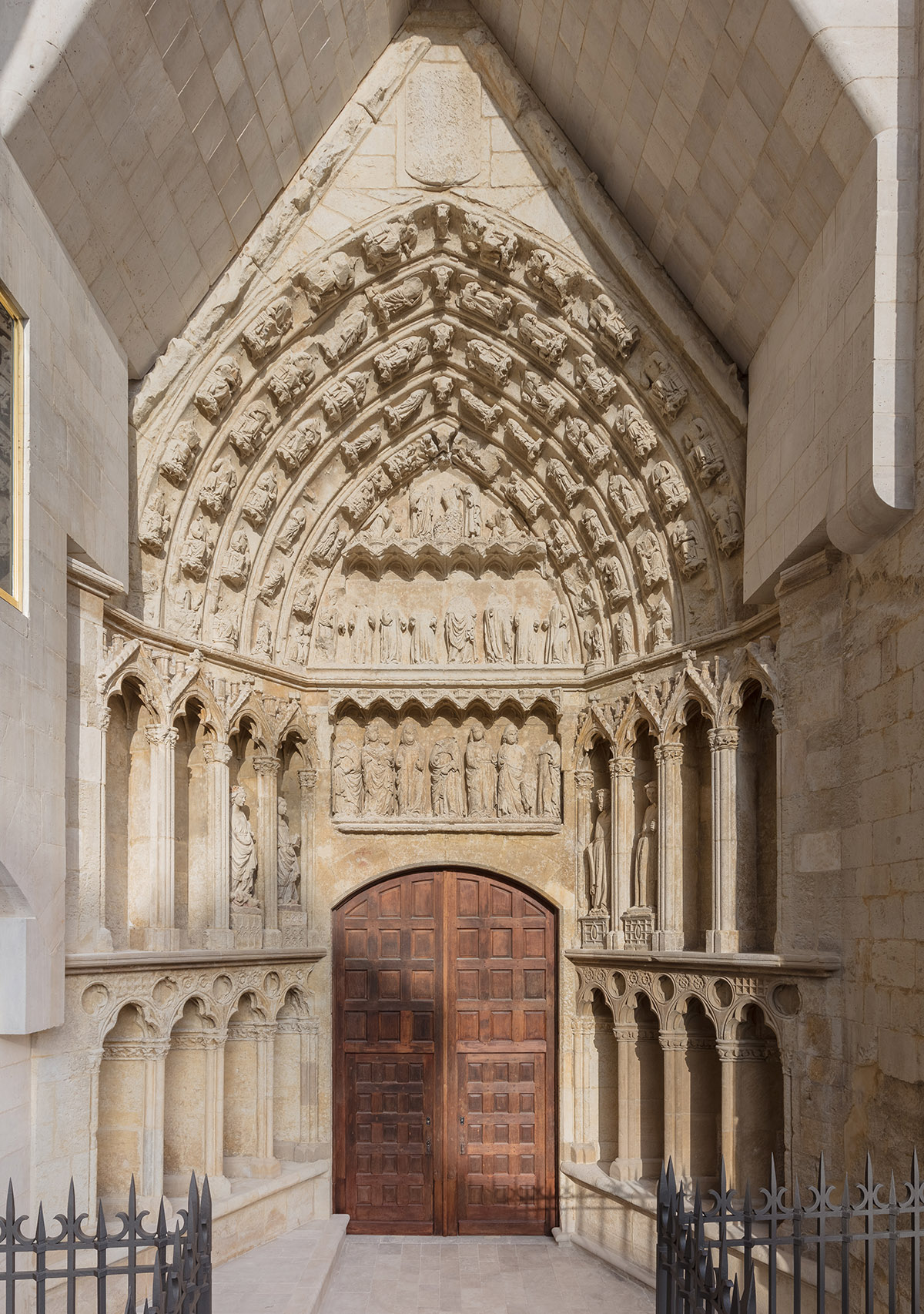Saint Anne Portal
Saint Anne Portal
The recently restored monumental portal of Saint Anna leads to the south arm of the transept. It remained wedged between the first section of the nave of the Epistle and the former Chapel of Saint James due to the presence of the defensive wall of the city. This entrance had to be walled up to offset the architectural problems that the building entailed. It was rediscovered in the 1962 intervention, although with many flaws that make it difficult to interpret the iconography fully. It follows the model used in the portal of Saint Theophilus in the Paris cathedral, which is extremely elegant and has an uplifting effect, although, according to some authors, it also displays structural connections with other portals in Spanish cathedrals.
A complex iconographic programme unfolds between the archivolts, tympanum, lintel and jambs. The five archivolts depict a wide range of themes with incredible dynamism and spontaneity: characters from the Old Testament, Christological themes, angels, religious figures, choirs of saints and the most complete cycle of the Infancy in Gothic monumental sculpture in Alava. The lintel has been treated differently and includes various scenes, some of which are badly damaged and cannot be clearly identified. They seem to be related to subjects connected to the Holy Family in order to exalt the human and divine nature of Christ. The tympanum, also very deteriorated, is presided over by the Baptism of Christ, a unique example of the Gothic style in Alava. Its symbolic nature could refer to the passage, in a physical and spiritual sense, that the neophyte undergoes through this sacrament to become part of the Christian community. The portal also came under the royal patronage of Alfonso XI and is integrated into the urban fabric of the medieval city, where the Jewish quarter was becoming increasingly important. Therefore, according to Professor Lucia Lahoz, it cannot be ruled out that this iconographic programme alludes to the Jewish population, indicating the close relationship between the building and its immediate urban surroundings.
There are two images on each side of the jambs, some of which are difficult to recognise. They were moved to the left portal of the Western Portico in 1563 and were returned to their original location during the restoration carried out in 1967. They date back to the early 15th century.
Locution
Ficha técnica
BASIC BIBLIOGRAPHY
AZCÁRATE RISTORI, José M.ª de. “Catedral de Santa María (catedral Vieja)”. En: PORTILLA VITORIA, Micaela J. et al. Catálogo Monumental Diócesis de Vitoria: Ciudad de Vitoria. Vitoria-Gasteiz: Obra Cultural de la Caja de Ahorros Municipal, tomo III, 1968,pp. 87-89.
SILVA VERASTEGUI, Soledad. Iconografía Gótica en Álava. Temas iconográficos de la escultura monumental. Vitoria-Gasteiz: Diputación Foral de Álava, 1987.
LAHOZ, Lucía, M. “Contribución al estudio de la portada de Santa Ana. Catedral de Vitoria”. Boletín del Museo e Instituto Camón Aznar, LXIII, 1996, pp. 79-104.
LAHOZ, Lucía, M. “Patronato real en el Gótico en Álava”. Boletín del instituto Camón Aznar, LXIX, 1997, pp. 53-80.
LAHOZ, Lucía, M. De ritos, guiños y ecos cívicos: La portada de Santa Ana de la catedral de Vitoria. (Estudio inédito realizado con motivo de la restauración de la portada para la Fundación Catedral Santa María)



